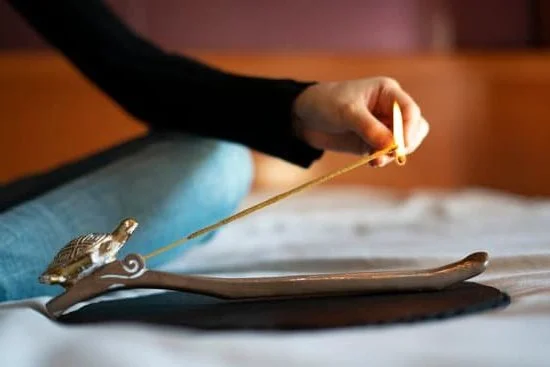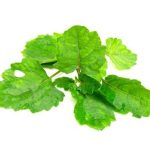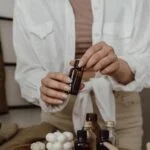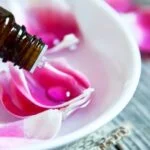Are you interested in learning how to make aromatherapy essential oils at home? Aromatherapy is a holistic healing treatment that uses natural plant extracts to promote health and well-being. In this article, we will discuss the various aspects of aromatherapy essential oils, including the benefits, choosing the right essential oils, methods of extraction, DIY recipes, safety precautions, and storing and preserving these oils.
Aromatherapy has been used for centuries as a way to improve both physical and emotional health. The practice involves using essential oils extracted from plants to enhance mood, relieve stress, promote relaxation, and alleviate various ailments. Whether you are new to aromatherapy or an experienced practitioner, making your own essential oils can be a rewarding and cost-effective way to enjoy the benefits of aromatherapy.
Before you start making your own aromatherapy essential oils, it’s important to understand the potential benefits they offer. From improving sleep quality to reducing anxiety and boosting immunity, different essential oils offer a wide range of therapeutic effects. By choosing the right combination of oils and methods of application, you can personalize your aromatherapy experience to address your specific needs and preferences.
Understanding the Benefits of Aromatherapy
Aromatherapy essential oils have been used for centuries to promote health and well-being. These natural oils are extracted from plants, flowers, and herbs, and are known for their therapeutic properties. Understanding the benefits of aromatherapy can help you make informed choices when selecting the right essential oils for your needs.
There are numerous benefits associated with the use of aromatherapy essential oils. They can be used to alleviate stress, anxiety, and depression, as well as to improve mood and promote relaxation. Additionally, certain essential oils have antibacterial and antiviral properties that can help boost the immune system and fight off infections. Some essential oils also have pain-relieving properties that make them effective for addressing headaches, muscle aches, and joint pain.
In order to fully reap the benefits of aromatherapy, it’s important to understand how to make aromatherapy essential oils at home or where to find high-quality oils. Making your own essential oils allows you to control the quality of the ingredients and customize blends to suit your specific needs.
There are several methods for extracting essential oils from plants, including steam distillation, cold pressing, and solvent extraction. Learning these methods is key in obtaining pure and potent aromatherapy essential oils that can provide maximum therapeutic benefits.
Choosing the Right Essential Oils for Aromatherapy
Aromatherapy is a holistic healing treatment that uses natural plant extracts to promote health and well-being. Essential oils are an integral part of aromatherapy, and choosing the right ones is essential for a successful aromatherapy practice. The key to selecting the best essential oils for aromatherapy lies in understanding their individual properties and benefits.
When choosing essential oils for aromatherapy, it’s important to consider the specific therapeutic effects you want to achieve. Whether you’re looking to relax, reduce stress, boost energy, or relieve physical ailments, there are specific essential oils that can address your needs. For example, lavender essential oil is known for its calming and relaxing properties, while peppermint essential oil is commonly used to alleviate headaches and boost energy.
Furthermore, it’s crucial to take into account any potential allergies or sensitivities when selecting essential oils for aromatherapy. Some individuals may have adverse reactions to certain essential oils, so it’s important to do a patch test before using them extensively. Additionally, pregnant women, children, and pets may have specific sensitivities to certain essential oils, so it’s important to research and consult with a healthcare professional before use.
In addition to considering therapeutic effects and potential sensitivities, it’s also beneficial to choose high-quality essential oils from reputable sources. Look for pure, undiluted essential oils that are derived from organic or wildcrafted plants. By choosing high-quality essential oils, you can ensure that you’re getting the maximum therapeutic benefits from your aromatherapy practice. Here is how you can make your own aromatherapy essential oils:
- Choose the plant material
- Select an extraction method
- Follow the extraction process
Methods of Extracting Essential Oils
Steam Distillation
One of the most common methods of extracting essential oils is steam distillation. This process involves using steam to break down the plant material, releasing the essential oils. The steam and essential oil mixture is then cooled, allowing the oil to separate from the water. This method is used for a wide variety of plant materials and produces high-quality essential oils.
Cold Press Extraction
Cold press extraction is typically used for citrus fruits, such as lemons and oranges. In this method, the rinds of the fruits are mechanically pressed to release the oils. Since no heat is involved in this process, it helps preserve the delicate aroma and properties of the essential oil. Cold press extraction is often preferred for producing citrus essential oils due to its simplicity and ability to yield pure and natural oils.
Solvent Extraction
Solvent extraction is a method used for obtaining essential oils from delicate flowers or plants that cannot withstand the heat of steam distillation. In this process, a solvent (such as ethanol) is used to extract the aromatic compounds from the plant material. The solvent is then removed through evaporation or vacuum distillation, leaving behind a highly concentrated essential oil. While solvent extraction can be more complex than other methods, it can produce exquisite essential oils with unique aromas.
These various methods of extracting essential oils allow individuals to create their own aromatherapy oils at home using different types of plants and materials. Understanding these techniques provides insight into how to make aromatherapy essential oils for personal use or in small-scale production settings.
DIY Aromatherapy Essential Oil Recipes
Aromatherapy has become a popular practice for relaxation, stress relief, and overall wellness. One of the best ways to incorporate aromatherapy into your daily routine is by using essential oils. Making your own aromatherapy essential oils can be a rewarding and cost-effective way to enjoy the benefits of aromatherapy. In this section, we will explore how to make aromatherapy essential oils at home, as well as provide some easy DIY recipes for you to try.
Methods of Extraction
There are several methods for extracting essential oils from plants, each with its own unique process and benefits. The most common methods include steam distillation, cold pressing, and solvent extraction. Steam distillation is the most popular method for creating essential oils at home, as it can be done with simple equipment like a distiller or a makeshift setup using a pot and heat-resistant bowl.
Cold pressing is typically used for extracting citrus essential oils, while solvent extraction involves using chemical solvents to extract the oils from delicate plant material. Whichever method you choose, it’s important to research and follow proper guidelines to ensure safe and effective extraction.
DIY Aromatherapy Essential Oil Recipes
Once you have extracted or obtained your desired essential oils, you can start creating your own custom blends for various purposes. A popular recipe for relaxation and stress relief is combining lavender, chamomile, and bergamot essential oils in a carrier oil like jojoba or coconut oil.
For an energizing blend, consider mixing peppermint, eucalyptus, and lemon essential oils. You can use these blends in a variety of ways including diffusing them in an oil diffuser or adding a few drops to unscented body lotion or bath salts.
Safety Precautions
Before using any DIY aromatherapy recipes with essential oils, it’s crucial to be aware of safety precautions. Essential oils are highly concentrated substances and should never be applied directly to the skin without being diluted in a carrier oil or other base ingredient.
Always patch test any new blends on a small area of skin to check for potential allergic reactions. Additionally, certain essential oils may not be safe for use during pregnancy or around pets, so it’s important to conduct thorough research before making your own aromatherapy products at home.
By following proper extraction methods and safety precautions when using DIY aromatherapy recipes with essential oils, you can enjoy the benefits of personalized blends tailored to your specific needs while ensuring safety and efficacy in your aromatherapy practice.
Safety Precautions When Using Essential Oils
Aromatherapy essential oils are a natural way to promote relaxation, improve mood, and alleviate certain health issues. However, as with any concentrated substance, it is important to exercise caution when using essential oils to ensure safety and avoid potential adverse reactions. Here are some safety precautions to keep in mind when using aromatherapy essential oils:
First and foremost, it is crucial to understand that essential oils are highly potent and should never be ingested. Ingesting essential oils can lead to serious health complications, including liver and kidney damage. They should also never be applied directly to the skin without being diluted with a carrier oil, as this can cause irritation or sensitization. It is recommended to perform a patch test before using any new essential oil topically.
Additionally, certain essential oils can have adverse effects on pregnant women, nursing mothers, children, and pets. Pregnant women should consult with their healthcare provider before using any essential oils, as some may cause contractions or other complications. Children and pets have different physiological responses to essential oils than adults do, so it’s important to research and follow specific guidelines for their use.
Lastly, proper ventilation is key when diffusing essential oils in an enclosed space. Prolonged exposure can lead to respiratory irritation or other health concerns. Always use the recommended amount of drops when diffusing and take breaks between uses. When applying aromatherapy topically or using it in a bath, always dilute the oil properly according to recommended guidelines.
It is important to keep these safety precautions in mind when incorporating aromatherapy essential oils into your daily routine. By following these guidelines, you can enjoy the benefits of aromatherapy while keeping yourself and others safe from potential harm.
| Safety Precautions | Description |
|---|---|
| Avoiding ingestion | Never ingest essential oils; they should only be used externally or aromatically. |
| Dilution for topical use | Always dilute essential oils with a carrier oil before applying them directly to the skin. |
| Consultation for special cases | Consult healthcare providers before using essential oils around pregnant women, nursing mothers, children or pets. |
| Ventilation during diffusion | Ensure proper ventilation when diffusing essential oils in enclosed spaces. |
Storing and Preserving Aromatherapy Essential Oils
Once you have successfully made your own aromatherapy essential oils, it is crucial to store and preserve them properly to maintain their quality and effectiveness. The shelf life of essential oils can vary depending on the type of oil, but proper storage can help extend their lifespan.
Essential oils should be stored in dark glass bottles to protect them from sunlight, as exposure to light can cause them to degrade over time. Additionally, it is important to store the bottles in a cool, dark place to prevent oxidation.
To preserve the potency and aroma of your homemade essential oils, consider adding a few drops of antioxidant-rich vitamin E oil to each bottle before sealing them tightly. This will help slow down the oxidation process and extend the shelf life of your oils. Another tip for preserving essential oils is to keep them away from heat sources, as heat can speed up the oxidation process and cause the oils to deteriorate more quickly.
Properly storing and preserving your aromatherapy essential oils will not only help maintain their therapeutic benefits but also ensure that they stay fragrant and potent for a longer period of time. By following these storage and preservation guidelines, you can continue to enjoy the many benefits of using homemade essential oils in your aromatherapy practice.
| Benefit | Tip |
|---|---|
| Extended shelf life | Store in dark glass bottles |
| Preserved potency and aroma | Add vitamin E oil |
| Maintained therapeutic benefits | Avoid heat sources |
Conclusion
In conclusion, making your own aromatherapy essential oils can be a rewarding and fulfilling experience. By understanding the benefits of aromatherapy and choosing the right essential oils for your needs, you can create personalized blends that promote relaxation, alleviate stress, and improve overall well-being. Learning how to make aromatherapy essential oils allows you to take control of what goes into your products, ensuring that they are natural and free from harmful chemicals.
Additionally, by familiarizing yourself with various methods of extracting essential oils and following safety precautions when using them, you can enjoy the therapeutic effects of aromatherapy without any adverse reactions. Whether you prefer diffusing essential oils, using them in massages, or incorporating them into beauty and skincare routines, there are numerous DIY recipes available that cater to different preferences and needs.
Furthermore, proper storage and preservation of aromatherapy essential oils will ensure their longevity and effectiveness. By keeping them in a cool, dark place and in airtight containers, you can prolong their shelf life and maintain their potency. With the knowledge acquired from this article on how to make aromatherapy essential oils, you can embark on a journey towards holistic wellness through natural remedies that enhance both physical and emotional health.
Frequently Asked Questions
How Do You Make Aromatherapy Oil at Home?
Making aromatherapy oil at home involves choosing a carrier oil like jojoba or almond oil and adding a few drops of essential oils to it. The essential oils should be diluted in the carrier oil to create a safe and effective blend for aromatherapy.
How Do You Mix Essential Oils for Aromatherapy?
Mixing essential oils for aromatherapy requires careful consideration of each oil’s properties and benefits. It’s crucial to dilute the essential oils properly with a carrier oil to avoid skin irritation or adverse reactions. Researching and experimenting with different combinations can help create customized blends for specific therapeutic purposes.
How Are Aromatherapy Oils Made?
Aromatherapy oils are made through a process of steam distillation, solvent extraction, or cold pressing, depending on the type of plant material used. During steam distillation, water is heated, producing steam that extracts the essential oils from the plant material.
Solvent extraction involves using chemical solvents to extract the aromatic compounds, while cold pressing is used for citrus fruits to obtain their essential oils. These methods require expertise and precision to produce high-quality aromatherapy oils.

Are you looking for a natural way to improve your health and wellbeing?
If so, aromatherapy may be the answer for you.





